I had a splendid outing yesterday with my sister Women of the Cloth to Hall Place in Bexley, a Tudor house and gardens just off the A2. There’s a splendid great hall and decorative plasterwork, but the main purpose of our visit was to see Pattern to Print, an exhibition about silk-printing company David Evans.
It’s a small exhibition but definitely worth the trip. David Evans was a silk merchant who set up a silk printing factory in Crayford in 1843, in a former printworks. The factory specialised in block printing at first; this was replaced by screen printing in the 1970s.
The exhibition begins with s 55-minute film, dating from the 1980s if the hairstyles are anything to go by! Fascinating viewing, it covers all the stages of silk production, including growing mulberry plants and spinning the yarn at a silk farm at Lullingstone Castle in Kent (which produced the silk for the Queen’s coronation robes and Princess Diana’s wedding dress, but closed down in 2011).
But what really comes across is the labour-intensiveness of producing the blocks for printing. Every stage done was done by hand, from burning and carving the wooden moulds to cast the pewter blocks, to inking and printing the fabric itself. To carve the blocks, the block makers had to produce their own chisels and files to match the requirements of the design: as the commentary notes, the actual carving of the block was of secondary importance!

From the master block, other blocks were produced for different colours – all had to line up exactly. By the time David Evans closed down in 2001, it had a library of around 70,000 blocks and 11,000 designs. The blocks were sold at Christies, and many of them went to the Cantrol Collection of Textile Printing Blocks, about which I can find very little information.
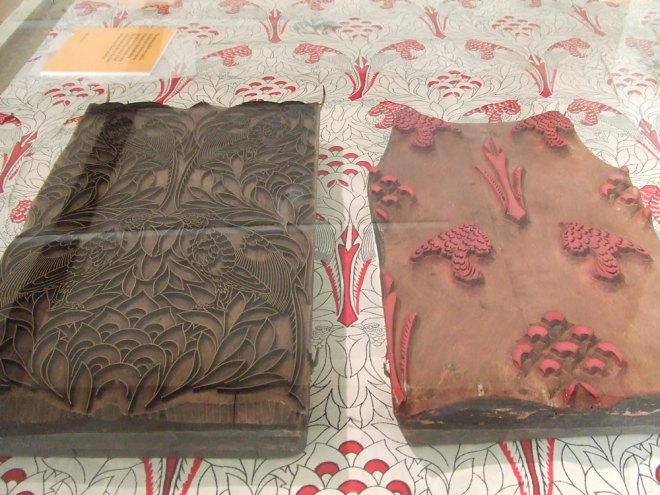
The blocks on show are items of beauty, amazing for their intricacy and precision. Some have been used by designers for Top Shop as inspiration for modern garments – I particularly loved a tortoise design (sorry about the funny reflections on some of the photos, but most exhibits were under glass).
There are also covetous pattern and swatch books.
After block printing, some of the silk was overdyed with madder, a natural red dye, to make the colours more subtle. A rail of Liberty prints shows samples of silk before and after overdyeing.
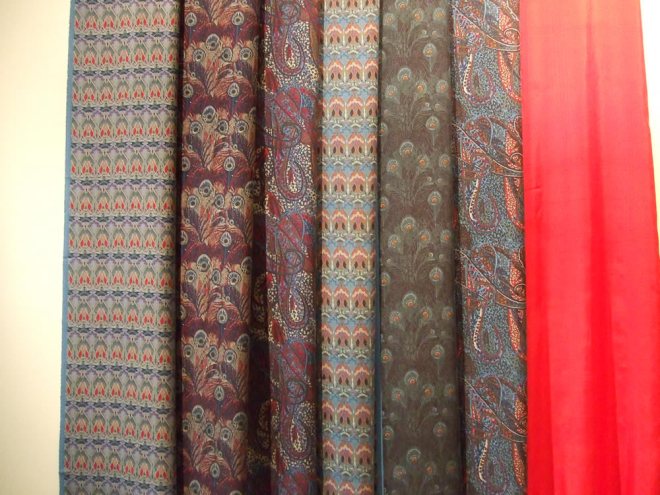
The madder was mixed with lime and cow dung to a secret recipe that only David Evans himself knew. The factory even had its own herd of cows to produce the dung!
Fittingly, all the information “panels” are printed on silk.
Movingly, the final piece of printed silk is also on display, dated 4 July 2001 at 10.47am.
Pattern to Print runs until 26 March.

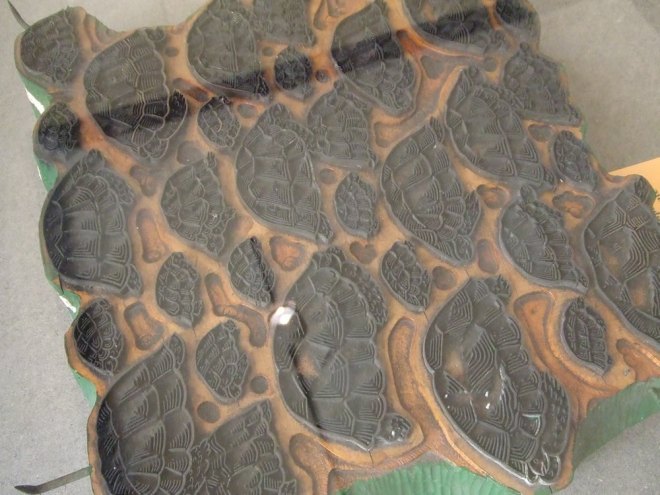
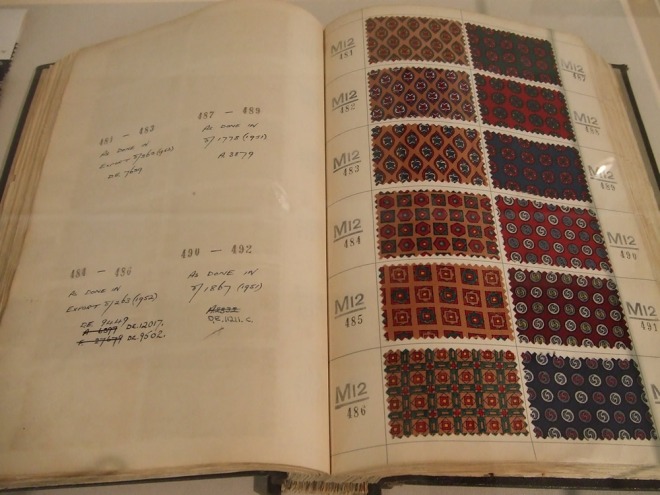
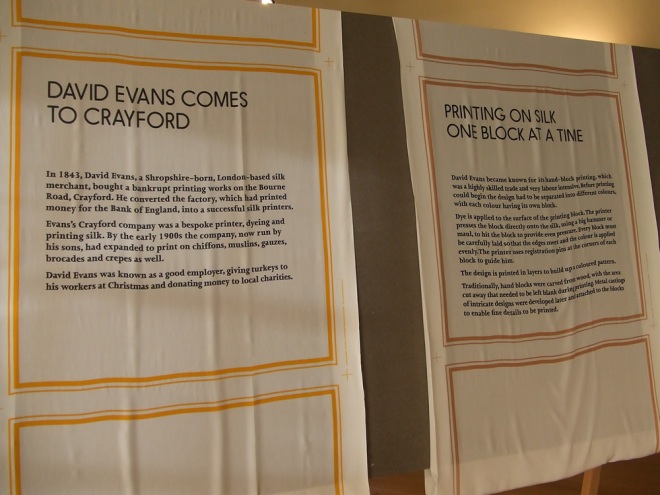

Reblogged this on Women of the Cloth.
Great outing, wonderful exhibition. Looking forward to The Things We Do In Bed curated by Tracy Chevalier at Danson house. Another Women of the Cloth outing?
Looks like a wonderful exhibit. Wishing I had some of those beautiful blocks 🙂
They are amazing, aren’t they – even more so when you know how much work goes into making them!
you can have 2 of the blocks if you like as we have just been donated them to sell to raise money for stray animals. Are you interested?
That’s interesting Georgina. How much are you asking for them?
I have no idea what would be a fair price. They are absolutely gorgeous. I also have the original Christie’s catalogue from 1984 that goes with them. I don’t have a modern phone that can take a photo but will try and get someone to do one for me. Do you have a number I can all you on? BTW, is this a blog? If so, I’ve never been on one before!
Georgina
Yes, this is a blog – welcome Georgina! 🙂
If you email me on flextiles@gmail.com I can give you my phone number. I know at least one other person who is interested.
Blimey! I’ve joined the 21st century! I’ve just looked at the catalogue and some of them were going for £100 – 300 in 1984…They’re in the garage and it’s raining so will try and find out what these ones actually went for tomorrow. There are a number of photos in the catalogue.
g
Watch out – you’ll be tweeting next! 😉
More chance of becoming pope…can I email photos to this blog? If so, how do I do it?
g
You can’t attach images to blog comments like this, but you can link to them if they are hosted somewhere else.
Probably best for you to email me the images, along with some info about the blocks (including price) and I’ll write a separate blog post with the details and ask people to get in touch with you if they’re interested. How does that sound?
Marvellous! Is your email address flextiles @ etc? Is it your blog then? You must wonder what planet I live on! Will send you an email now. Done!
Interesting. Thank you.
Thanks Liz!